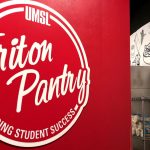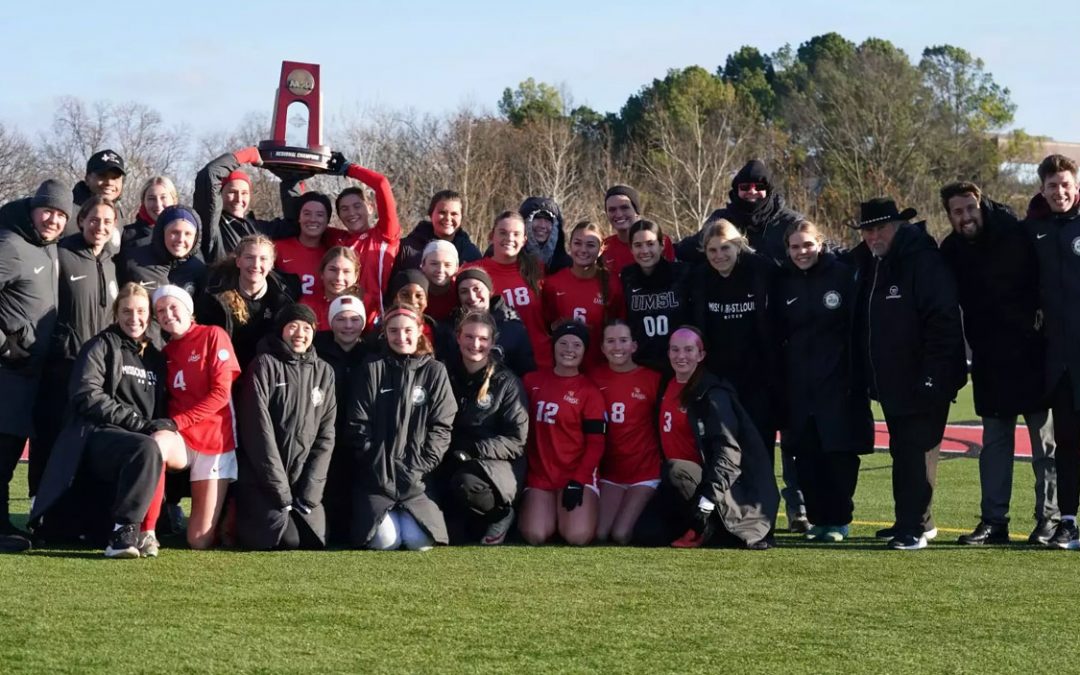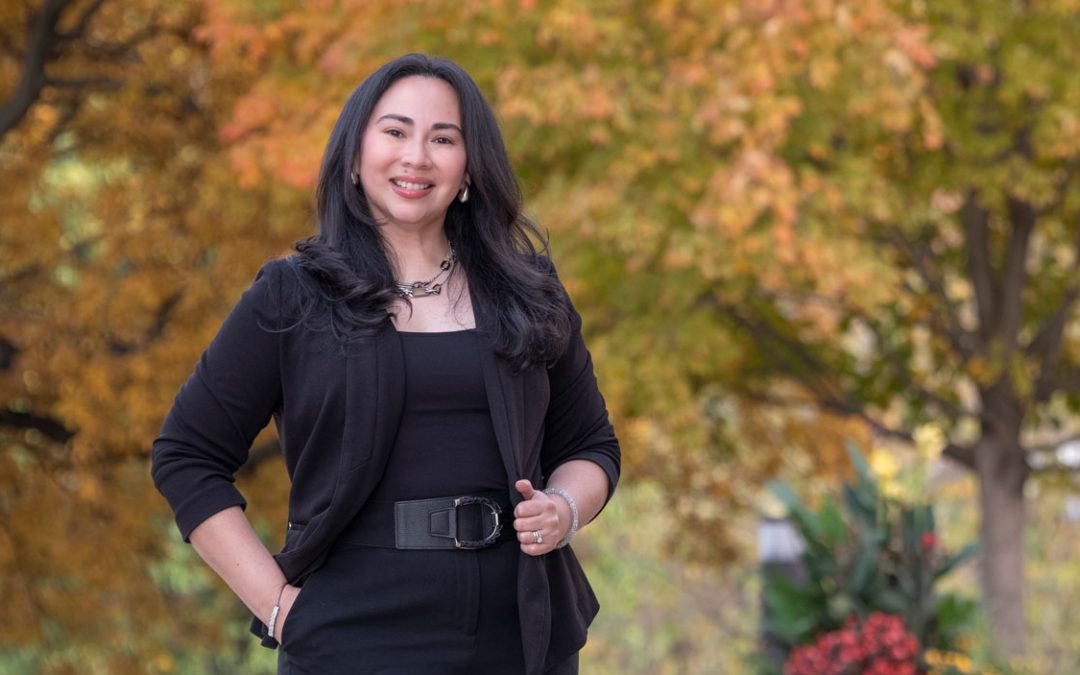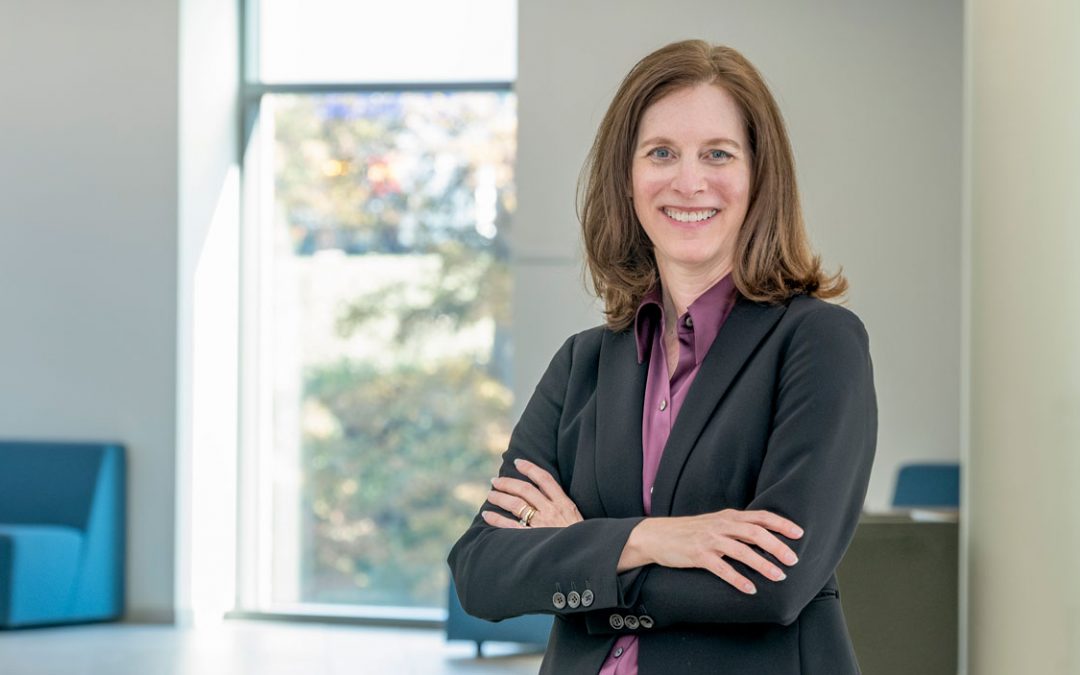
During their April 11 presentation at UMSL as part of the Student Life Speaker Series, Ben Cohen (far right) listens as a pint-sized audience member asks him and his long-time friend Jerry Greenfield to name the weirdest ice cream flavor they’ve ever developed at Ben & Jerry’s, which the two founded in 1978. (Photos by Rebecca Barr)
Speaking alongside his friend and business partner Ben Cohen, Jerry Greenfield covered a lot of ground last week at the University of Missouri–St. Louis. But he started with what he called “the most important thing,” informing the crowd that Chocolate Fudge Brownie, Strawberry Cheesecake and Americone Dream would follow the talk.
With future reward assured, the iconic ice-cream pair proceeded to regale the large audience gathered April 11 in UMSL’s Millennium Student Center with the history of Ben & Jerry’s.
Greenfield, who launched into a detailed narrative of his and Cohen’s individually unsuccessful forays into the working world prior to teaming up, pointed out that the ice cream business they founded in 1978 was actually bought by Unilever 15 years ago, though the operation still bears the Ben & Jerry’s name.
“On the same day they bought Ben & Jerry’s, they also bought SlimFast,” Greenfield said, noting the irony. “Ben and I both still work at the company – we’re employees. We have jobs where we have no responsibility and no authority.”
But the duo’s continuing impact on the business they hatched in Burlington, Vt., decades ago with a single, five-gallon ice-cream machine is another story – one that impressed UMSL freshman Megan Mayfield during their Student Life-sponsored talk.
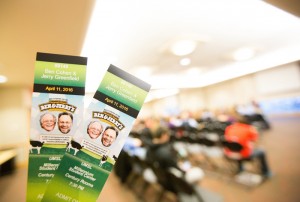
The founding faces behind Ben & Jerry’s ice cream made an appearance at UMSL last week before a crowd of about 150 people.
“The prospect of entering a business-based career has never been particularly appealing to me,” said Mayfield, who is heavily involved with UMSL Sustainability efforts on campus, “but after listening to Ben and Jerry, I feel more aware of how business works, particularly on the ethics side of things, and how there are different approaches and methods to business. [It] definitely made me think about business in a way that I had never thought to.”
According to Cohen and Greenfield, growing Ben & Jerry’s with methods they could feel good about meant operating in some rather unusual ways. For instance, they opted not to take money from venture capitalists as the company was rapidly expanding.
“Our business advisers said it was a terrible idea,” Greenfield recalled. “[But] we said, ‘If we want to grow our business, we want to do it in a way that’s consistent with our values.”
He and Cohen decided on an alternative plan, offering up stock in the company to their fellow Vermont residents – “our neighbors, the people who had been supporting the company since it started.” At the end of the first public offering, they’d raised $750,000.
From there, redefining business as usual became a pattern for Ben & Jerry’s.
“There’s a spiritual aspect to business, just as there is to the lives of individuals,” said Cohen. “We’re all interconnected, and as we help others, we can’t avoid helping ourselves.”
But that idea is still “considered kind of heretical” in the commercial world, he added.
“The only way that success has been measured for eons is in profit,” Cohen said. “Why don’t we change the way we measure success?”
Years ago, Greenfield and Cohen brought all of their employees together in a large room to brainstorm ideas in answer to that question. Collectively, they decided that “the solution to the dilemma is to choose those courses of action that have a positive effect on both parts of the bottom line,” Cohen said – measuring not just profit but “how much [we’ve] improved the quality of life in our community.”
Embodying that philosophy hasn’t been without its challenges and controversies, of course.

The ice-cream entrepreneurs stuck around after their talk to chat with attendees and enjoy some Americone Dream, Strawberry Cheesecake and Chocolate Fudge Brownie.
“Not unlike coming up with new ice-cream flavors, a lot of it is trial and error,” Cohen said.
Still, they had lots of successful examples to share, and UMSL biology major Sarah Bell said she especially appreciated the campus lecture for its attention to “the more serious responsibilities of businesses and politicians.”
“It was interesting to hear how Ben & Jerry combined their personal history with making ice cream with their larger messages for businesses to take responsibility for society and the environment,” she said. “I liked hearing how they used their concern for environmental and global issues – like rainforest deforestation and the Cold War – to create new flavors and design the packaging on their ice cream.”
In the latter case, Cohen noted, there was much disagreement even within the company itself over the decision to package a new “Peace Pops” product with calls for funding “bridges of friendship” instead of “walls of fear” with a small portion of the U.S. defense budget. Some considered it such a political move that sales would drop and people would lose their jobs.
“What happened [in the end] was that it wasn’t a problem,” Cohen said. “We actually got tons of positive publicity for it, and none of the bad stuff happened. That kind of paved the way for the company to take more and more stands … to address some of the prevailing problems of the day.”
In addition to taking questions from the large crowd following their talk, Cohen and Greenfield devoted some closing remarks to an effort to rid U.S. politics of the influence of big money. Cohen presented the StampStampede.org effort with an energy that drew much applause and laughter from the crowd.
Afterward, he and Greenfield took time to pose with students and other eventgoers around the brightly lit campaign sign that Cohen had been busily decorating with a string of holiday lights throughout his friend’s remarks at the podium.
UMSL senior Dipa Patel, who was among a group of students that dined with the pair before the talk, said she was astounded at their warmth. Two of her fellow students, freshmen Imani Reid and Awa Kante, for whom Patel serves as a mentor through the Emerging Leaders program, also found Cohen and Greenfield remarkably persuasive and relatable, especially considering they are “higher ups,” as Kante put it.
“I was impressed that they were so humble,” she said.
Media Coverage:
Riverfront Times







